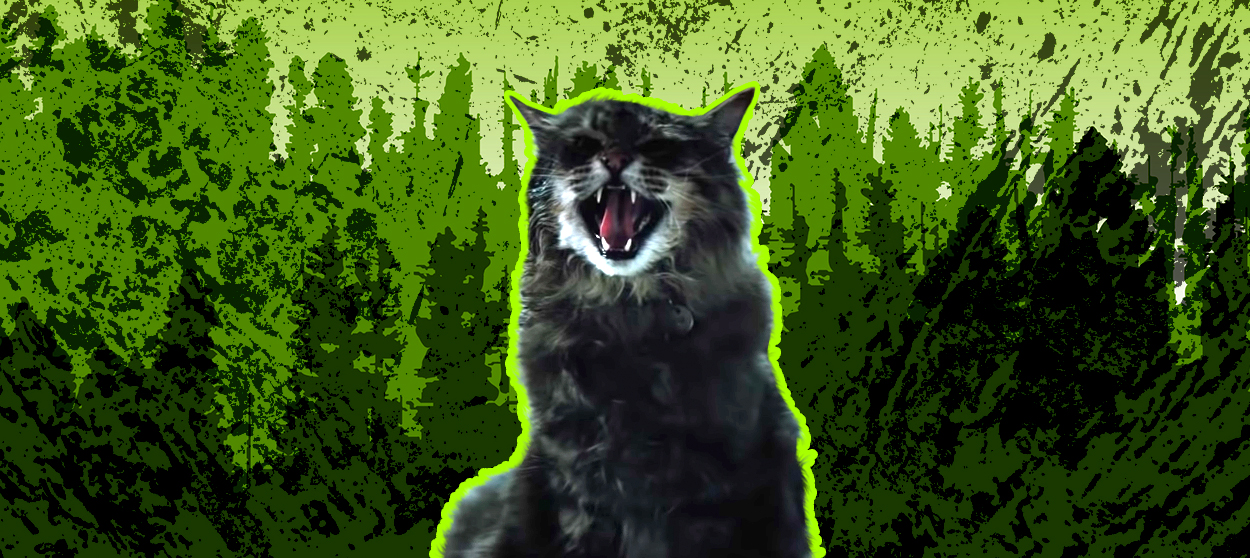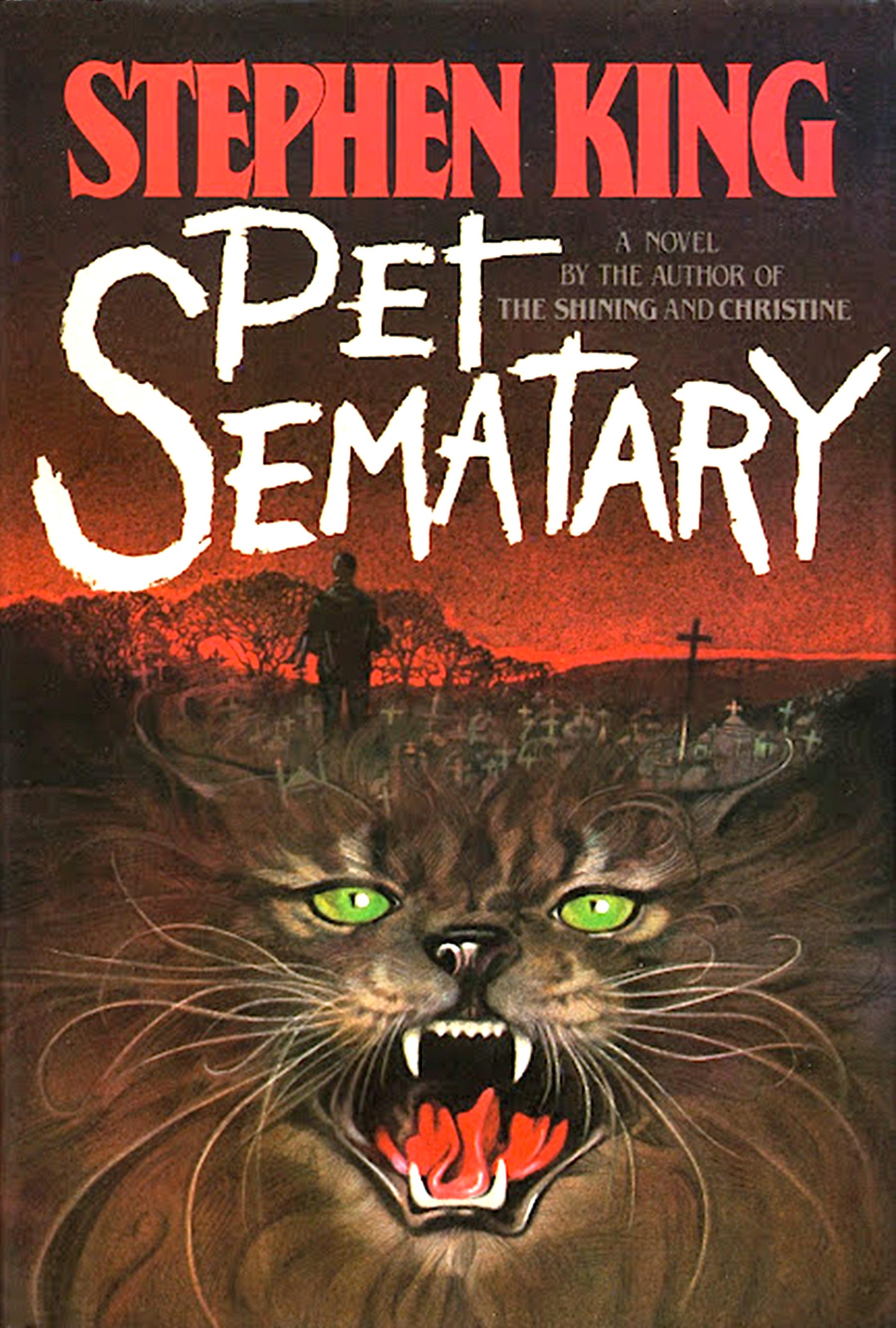Which version of the Pet Sematary cat is the scariest?
Here are how the different portrayals of Church stack up


There is something unnerving about cats. For centuries, they have been harbingers of misfortune, familiars to witches, thieves of breath. But in the history of literature and film, perhaps no cat has terrified more audiences than Pet Sematary's Church.
Stephen King's 1983 novel begins when the Creed family moves to rural Maine with their cat, named for Winston Churchill. But Church is not destined to live long in the country; he is killed after being hit by a truck. Distressed at the thought of having to tell his children about the loss of the family pet, Louis Creed follows the advice of a neighbor to entomb Church in an ancient burial ground that lies beyond the local pet cemetery. It is not long before Church rises and returns home, stranger and eviler than before.
In the more than three decades since King published Pet Sematary, Church has taken many forms, from the black-and-white tomcat described in the novel to a fluffy Maine Coon in the 2019 adaptation, which is out today. Here are how the different portrayals of Church stack up.
The Week
Escape your echo chamber. Get the facts behind the news, plus analysis from multiple perspectives.

Sign up for The Week's Free Newsletters
From our morning news briefing to a weekly Good News Newsletter, get the best of The Week delivered directly to your inbox.
From our morning news briefing to a weekly Good News Newsletter, get the best of The Week delivered directly to your inbox.
4. Pet Sematary (1989, Mary Lambert)
Mary Lambert was the first director to visualize Church on screen, and her version of the cat who came back is by far the best known. Rather than adhere to the description of Church provided by King, Lambert cast a beefy blue British shorthair to play the lead feline.
Although I've ranked this Church the "least scary" of the four versions, Lambert's cat is by no means not scary — it especially thrilled me when I watched the movie for the first time as a teenager. Lambert reportedly used "eight or nine" different cats to achieve the composite of Church she wanted for her film; still, the cats' glowing green eyes, which are straight out of King's novel, are a goofy special effect that hasn't aged well.
This early iteration of Church gets points for setting the standard for what King's cat looks like on screen. Alas, the 1989 Church fails to convince you he's really possessed by an otherworldly spirit, and not just ignited by a bit of Hollywood magic.
A free daily email with the biggest news stories of the day – and the best features from TheWeek.com
3. Pet Sematary original 1983 cover art (Linda Fennimore)

It is impressive that a book cover can give you nightmares, but that's why Linda Fennimore's Pet Sematary design is one of the greatest horror covers ever.
Fennimore chose to render Church as a long-haired brown cat, with his most arresting feature being his lantern-like eyes. While it is admittedly a difficult task to transform the image of a sleepy house cat into something that will induce nightmares, Fennimore's decision to make the cat the dominant image on the cover helps communicate a sense of dread and vulnerability, with the silhouetted human figures reduced to the size of the domestic carnivore's mouth. The cover is so effective that the 2019 Pet Sematary movie poster follows its cue, enlarging Church to loom over tiny figures below.
As for the difference in color with King's cat: "I do remember that because [the image] was pretty dark and indistinct that it was very helpful to have cat markings, so that it was clear what it was, rather than just a solid color," Fennimore told EW, adding: "[M]y sense of doing this thing was, 'My God, this is going to be so boring unless I can pop out teeth, and mouth, and the eyes.'"
It's safe to say it worked.
2. Pet Sematary (2019, Kevin Kölsch and Dennis Widmyer)
Stephen King famously described Pet Sematary as "the most frightening book I've ever written," and I have yet to find a novel of his that makes me disagree. Pet Sematary is imbued with a sinking, helpless feeling of dread, and that tone is achieved in large part via King's descriptions of the family tomcat, which grow increasingly hellish after Church's reanimation.
While there are few physical descriptions of Church in the novel beyond his "muddy yellow-green" eyes, King does suggest Church is a tuxedo cat, both from a reference to a "white bib" and his likeness to a "batlike shadow." But Church isn't frightening for how he looks so much as for what he seems to know: "He lies around the house all day long and looks at me with those strange, muddy eyes — as if he'd seen something that had blasted away most of whatever intelligence a cat has," the father, Louis Creed, muses at one point. At another, Louis imagines he catches Church grinning at him after he almost trips over the cat on the stairs. Church's role in the climax of the novel is particularly creepy.
Pet Sematary is a difficult book to adapt, because its terror is so internal. When put to screen, even a demonic cat can be goofy. Yet when left up to the imagination, King's Church is the most frightening of all.
Jeva Lange was the executive editor at TheWeek.com. She formerly served as The Week's deputy editor and culture critic. She is also a contributor to Screen Slate, and her writing has appeared in The New York Daily News, The Awl, Vice, and Gothamist, among other publications. Jeva lives in New York City. Follow her on Twitter.
-
 7 bars with comforting cocktails and great hospitality
7 bars with comforting cocktails and great hospitalitythe week recommends Winter is a fine time for going out and drinking up
-
 7 recipes that meet you wherever you are during winter
7 recipes that meet you wherever you are during winterthe week recommends Low-key January and decadent holiday eating are all accounted for
-
 Nine best TV shows of the year
Nine best TV shows of the yearThe Week Recommends From Adolescence to Amandaland
